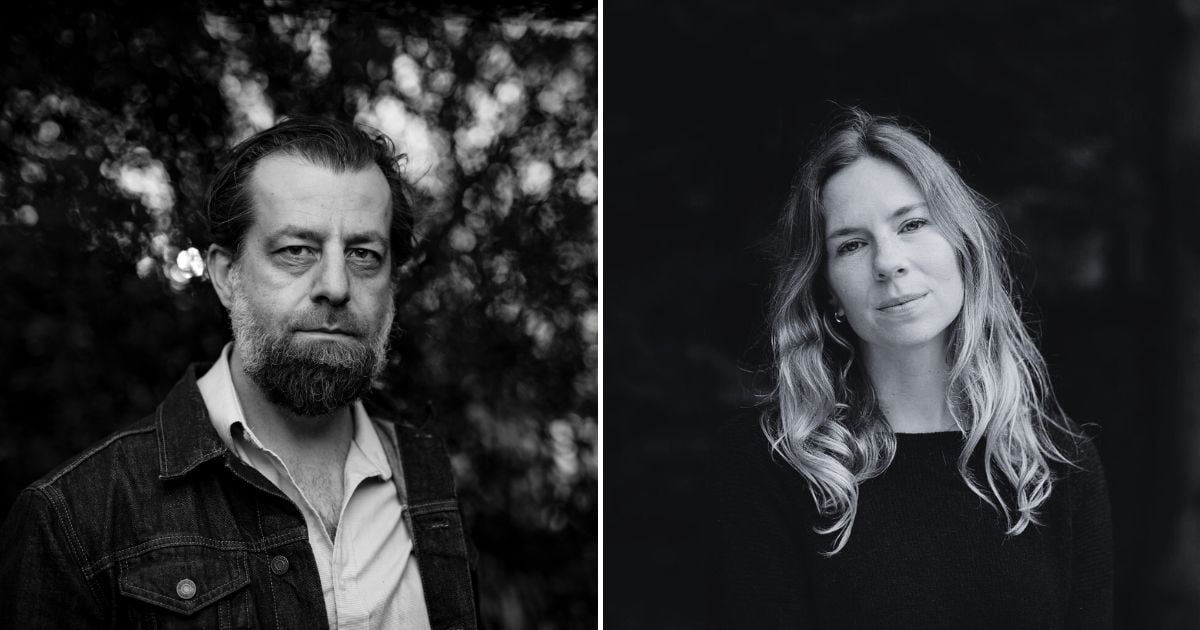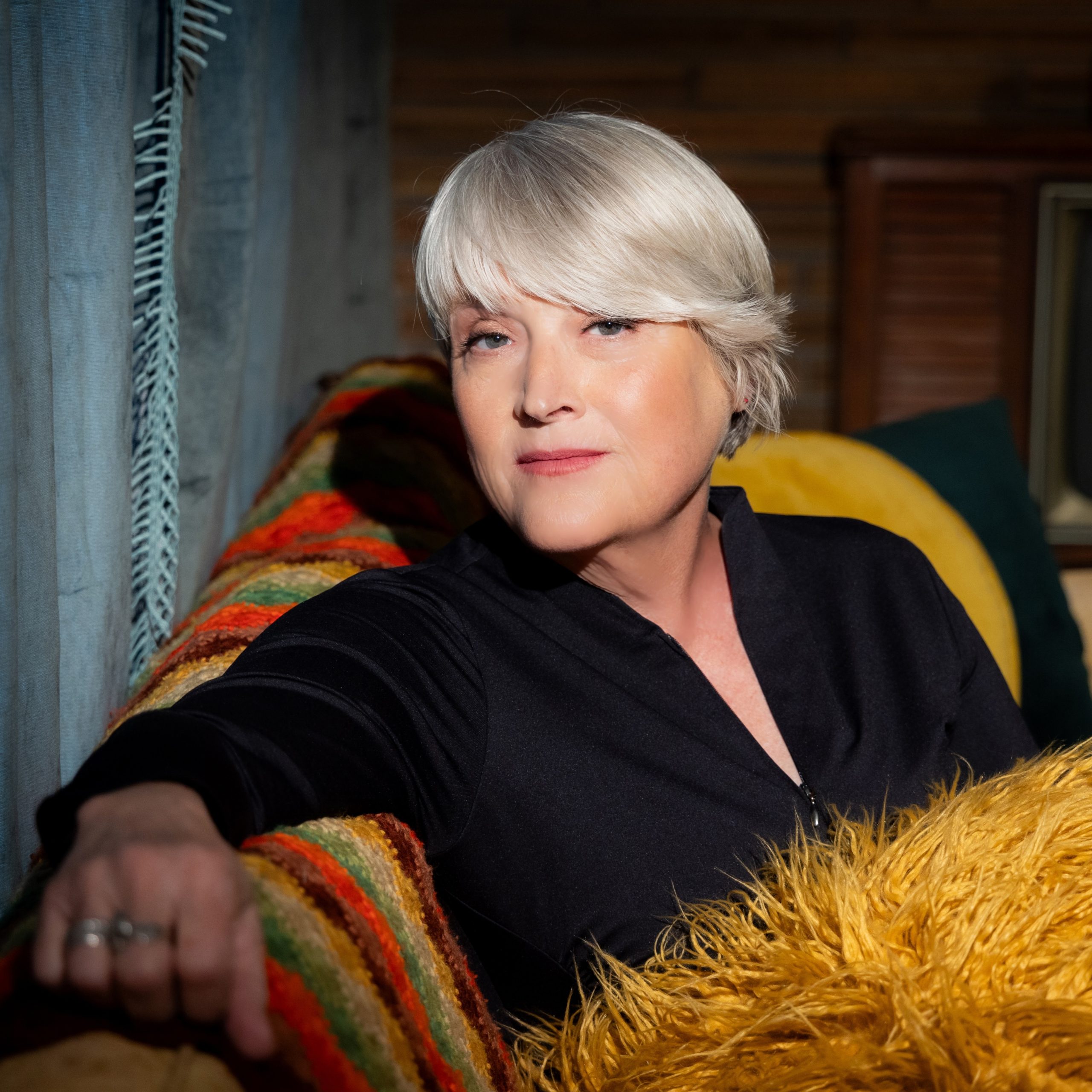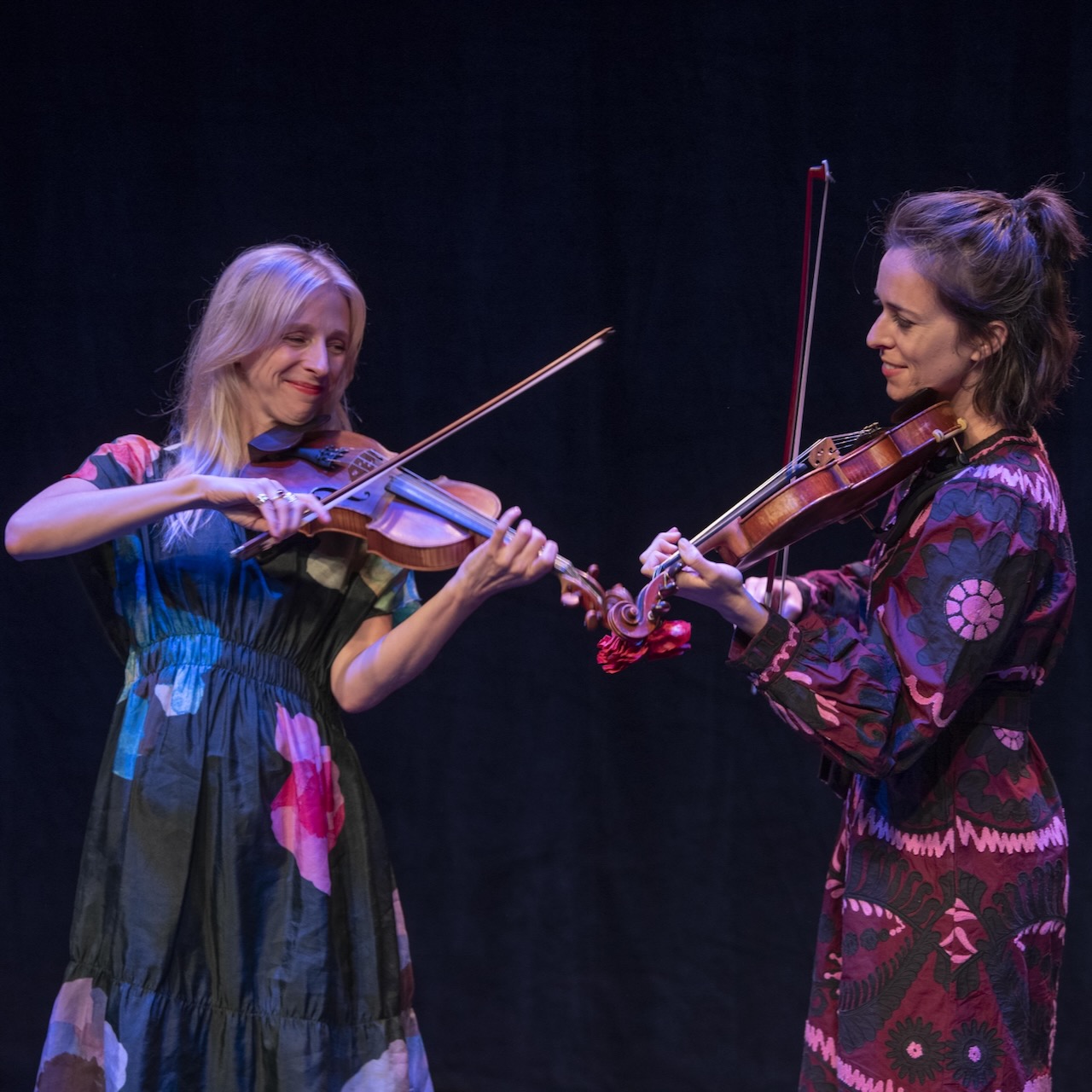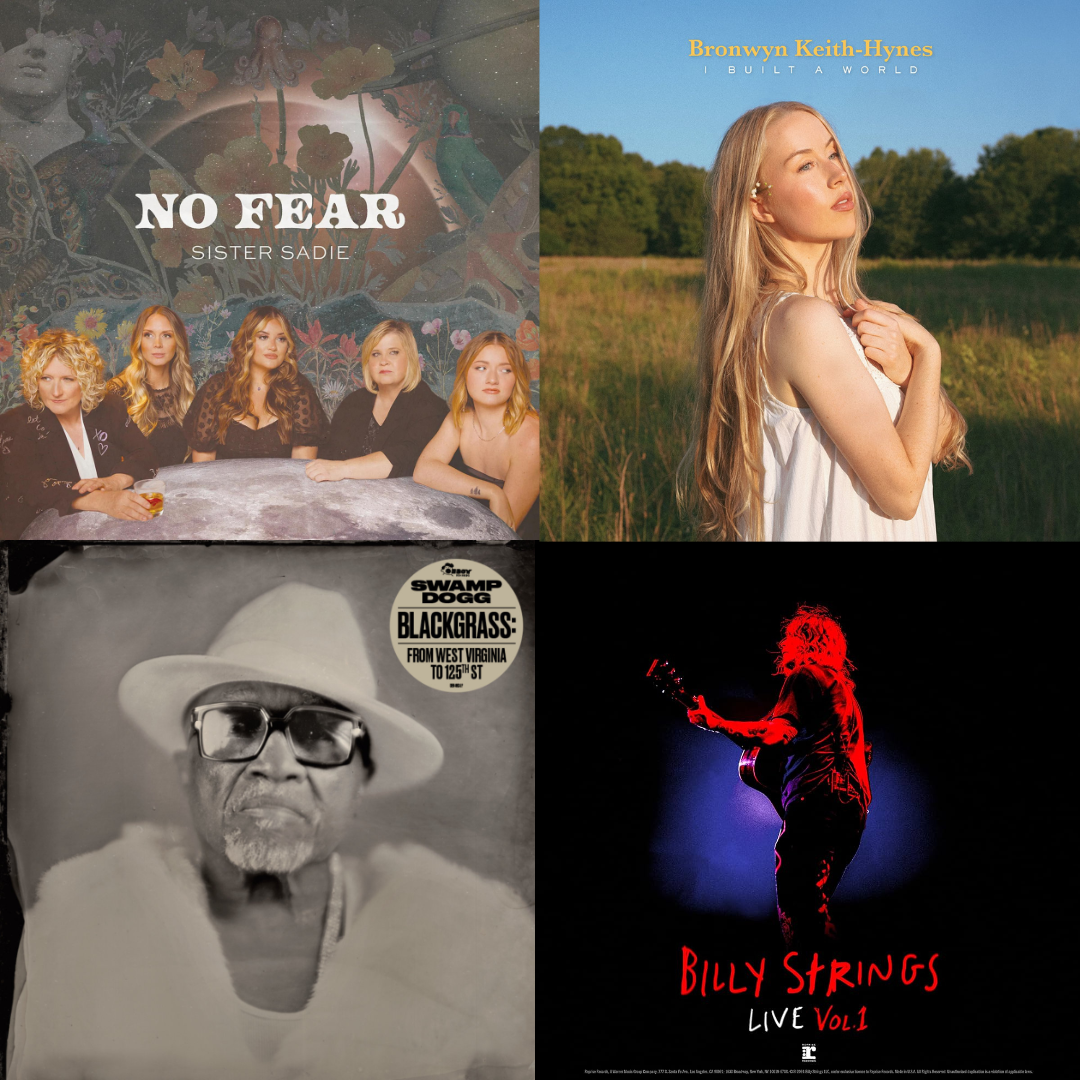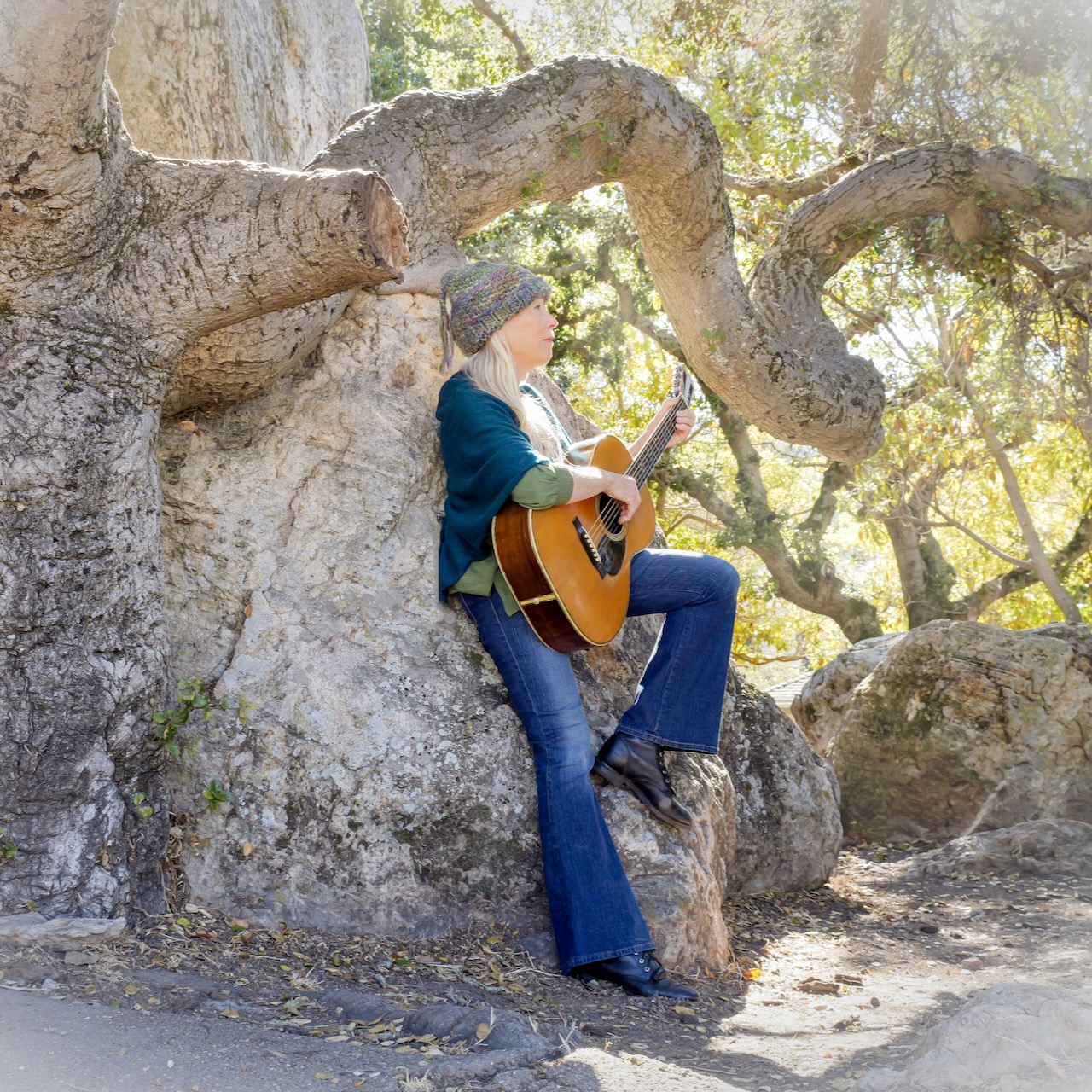(Editor’s Note: Musician, forager, and ‘Can I Eat This?‘ host Sean Rowe recently chatted with singer-songwriter and instrumentalist Hannah Read for BGS about her new instrumental fiddle album, The Fungi Sessions, which was inspired by her mycologist father, who passed away in 2020. Their conversation has been lightly edited for flow and clarity.)
Sean Rowe: This is really cool for me, because obviously BGS had secret reasons for pairing us together and I think they made a good choice. I feel like we have some interesting things in common…
Let’s start with your origin. You were born in Scotland, correct? Whereabouts?
Hannah Read: Yep. I was born in Edinburgh. It’s a gorgeous city. I mean, it really is. I was born in Edinburgh, grew up there, and then I also lived on the Isle of Eigg, which is a wee island off the west coast of Scotland. When we lived there – I lived there with my mom and my sister – there were 60 people living on the island. Now it’s up to 120. It’s this incredible, incredible island, and that’s where I really got into music. We lived there full time when I was seven in a little house completely off the grid with no running water or electricity. Music just became my thing at that point.
That was kind of my Edinburgh – Edinburgh to Eigg and back. We were back and forth a lot until I was 18.
SR: I definitely want to talk about this new album, but before we get into that, can you tell me a little bit about the music you grew up with and also how it changed or evolved when you moved to the States?
HR: I grew up playing trad music. I’m heavily immersed in that scene. As I’m sure you’re well aware, the Scottish trad scene is thriving and has been thriving forever – at least in my lifetime. I was very involved in that. I was also very involved in the Scottish jazz scene. That was a big part of my upbringing.
My mum played music growing up. She played cello and we were around a lot of music. My dad was not a musician, but he listened. His record collection was absolutely bonkers and he had hitchhiked across America three or four times in the late ‘60s, early ‘70s, and was super into all the folk revival stuff. I was hearing a lot of that growing up, a lot of California folk stuff. It’s funny that I’m living here now, but a big part of my upbringing was listening to a lot of that stuff, alongside going and seeing any acts that were coming over from America, doing the circuit over there. [At] about 15 or 16 years old, I got super into jazz singing. And actually, I went to Paris and studied jazz vocals for a year when I was 18. I did like a one-year diploma there. Then I went over to Berklee College of Music, because my underlying thing, even when I was doing that, was that fiddle music was my true calling.
SR: And why the fiddle? What does it do for you?
Hannah Read: Oh, the fiddle. When I play the fiddle – I was actually playing yesterday and I had put it into a different tuning, it’s like F B, F B, this tuning that I’d just heard about a couple of nights ago. It doesn’t always do this, but the way it just kind of evokes so much, it’s such a deep resonance in my body, basically. I think I felt that my whole life when I’ve been playing the fiddle, being able to play with people, the community. The fiddle has opened up so many doors for me, it’s just become my whole community.
A couple of weeks ago, I was in Louisiana at Blackpot Festival. There’s this fiddle player called Rosie Newton who lives up in Ithaca and she was down there. She’s a great Cajun and old-time player and we hadn’t actually played tunes before, but we sat down and kind of like locked our knees [together] and played tunes. The way she plays, I was so interested to actually sit with her and play music. As you know, when you are playing just locked [in], there’s nothing in my mind as magical as when a fiddle on fiddle groove together.
SR: Aside from music, I’m also a forager. I have been for many years. I know that your father was a mycologist, how did you get into that world? What are some of your early memories around it? Your dad, I assume maybe he took you out on field trips, showing you things. Tell me about it.
HR: We were around it from when I was born, and I’ve been thinking about it a lot recently, obviously. You know, things from the salt shaker and pepper shaker in our house [were decorated] with little mushrooms. There was mushroomy stuff all over the walls – not in like a, “Bleh, we’re surrounded by mushrooms!” way, it was subtle, but it was very much there.
Dad had a lab at Edinburgh University. So when we would spend our weekends going to dad’s house, we would spend our weekends running around the labs at Edinburgh University. [I remember] the distinct smell of being in the biology lab at the university and checking out the new microscopes.
SR: Did you think it was weird? Compared to what your friends were doing or was it strange to you?
HR: My dad was so passionate, he was contagious. I think his passion for mycology, mushrooms, and his work has been a massive influence on me and my work and the passion that I have towards music and what I do. I mean, it’s an obsession, he was obsessed. Completely obsessed. And I am pretty obsessed with what I do, as well.
I remember going down to Newcastle, dad had some colleagues down there, friends down there, that we would go on forages in the woods with. He would also come over to Eigg and we would go out and look at mushrooms. We were always going off and getting chanterelles and puffballs. It was just what we did. He was always pointing them out. However, I think because it was Dad’s thing, and it was [always] around us, I never took the time to go, “Hmm, I’m going to learn more about this myself,” because I was surrounded by it. When people would talk about being into foraging or mushrooms suddenly I’m like, “Oh yeah, me too!” But, until dad passed away – three and a half years ago, at the beginning of the pandemic – and suddenly mushrooms. It almost felt like dad died and suddenly all this whole world opened up for me, because everybody was stuck at home and able to delve into these curiosities like fungi and being out in nature more, it became this thing. I was like, “Oh, this actually is my thing.”
But I don’t know that much about it. That was a funny bit. You know, the Fantastic Fungi film coming out and all of the buzz around that, and I actually did not realize until the last couple of months that my dad was friends with all of these people and I had met them all. I had met Paul Stamets. Dad was the president of the Royal Mycological Society – also the British Mycological Society. He was president, so he actually organized the 2010 world meeting which happened in Edinburgh at Usher Hall. All of these people came and I met them all then.
I played at the opening and closing event and I was around all of these people, but I never put two and two together until a couple of years ago when these films were coming out and there was all the buzz and until the album was about to come out. I had one of Dad’s colleagues say, “I’ll send the album to Paul Stamets and Merlin Sheldrake” – and all these other people.
So, over this time it had crossed my mind, “I’d like to learn more about this stuff.” I didn’t have the knowledge and I can’t quite talk about mushrooms – because there’s so many people that know way more than me, I feel underqualified – but anytime it came up and someone was like, “I do a lot of foraging,” and I’d [respond], “Oh, you do? I don’t, but I did.”
In the spring, the day after the anniversary of my dad passing, I was contacted by a mycologist at Edinburgh University called Dr. Edward Wallace. The topic of the email just said “Fungi music?” I was like, “What?” It just said, “I would love to commission you to write an album of fungi-inspired music. What do you think?”
Right away I was like, “Yes, this sounds amazing.” Turns out he’s about my age, he is also a fiddle player, and had been to see me play and I’d announced, “I’m playing a tune called ‘Waltz to a Fun Guy,’ which was this tune I wrote for my dad” – which was just a simple little waltz that was on my old-time record.
[Wallace] heard that and he thought, “I would love to hear more of this stuff with more of a focus.” That’s really where it came from. There was a grant from, the Welcome Trust, which is a trust in London, and they funded a full album. They gave me the opportunity to do whatever I wanted. It’s been a really, really interesting process. It came out of nowhere and it actually came at a perfect time… I gave myself a week in May to write the whole thing, because I felt that it was really important for this album to feel organic and feel really grounded and capture a moment in time.
SR: Putting limitations on yourself can sometimes really boost creativity – and art itself, I think, by the limitations. I think that has a lot to do with the kind of thought that’s involved, the analytical side of things can wreak havoc when overdone. When I record, I will record in completely new environments with all new people that I haven’t met before. Could be a total disaster, but it’s the act of creating these limitations that I think make for a kind of danger, it’s a kind of unknown territory. But that can also open things up in a way. It also makes me think of foraging.
This is kind of funny, but I have this kind of superstition where I always joke to myself that if I prepare too much to go out foraging, I’m not going to find what I’m looking for. It’s those moments when I’m really not even looking for that thing, or I’m open to whatever happens, that I find something good – and then I might not even have anywhere to put the stuff to take it back home. There’s a sort of magic in that. The limitations, that’s a really interesting idea all around I think.
HR: I totally agree with that.
SR: When you were approached with this idea for this album, did you immediately think, “Oh yeah, instrumental”? Or did you have to work this out in your brain, whether or not you were going to write songs or do it instrumental?
HR: Great question. My initial reaction was [all over the place]. I just had so many ideas, off the bat. I remember calling my sister after getting that email being like, “I can do this– Oh, could be a children’s album–, Oh, it could be this– Oh, it should be accessible for this…” But it came together slowly more and more. I got a bit more anxious about it and I was like, “Actually,
Let’s keep it simple.” Nobody’s asked me for anything. I can do whatever I want here. Nobody is asking me for songs. Nobody is asking me for tunes. Then I was like, “I don’t actually know enough to write songs that will feel authentic.” It feels almost icky to me, writing about something that’s a very precious thing that I actually don’t have the knowledge to back up.
So I thought, keep it simple. I’m going to write, I’m going to just capture each tune. I want to capture a feel of some sort of different species. I actually reached out to one of my dad’s colleagues, Pat Hickey, who he used to work with at Edinburgh. He’s a scientist still based in Edinburgh, but not at the university. He and my dad used to make all these beautiful videos of mycelium growing, time lapse videos of them growing under these incredible microscopes. I asked him if he could send me a bunch of stuff and I just started watching those and seeing what came up.
If it was going to be lyrics and if stuff was going to naturally come that way, great! But it wasn’t. It was just instrumentals. I thought, “Great. This is going to be an instrumental record.” Volume 2 might have lyrics, but it also might not. I might collaborate with a poet, somebody who does have more knowledge on this stuff.
I think it would have been a very interesting, different thing if I had gone down the lyric route – and that door is not closed. I’m super keen to, I think that would involve collaboration. I would love to work with someone who does actually know a lot about it.
SR: Before we go through a few of the tracks, the first thing I’m very curious to know is about the interludes, because the little bit I read about them was that they include dirt and bark decomposing. How were those sounds acquired? It’s very cool.
Hannah Read: My friend, Charlie Van Kirk, lives up in Round Pond, Maine. He and I have been collaborating for years, but I really wanted the album to have something else – rather than just instruments. I wanted the listener to be taken on a journey.
I feel like there’s millions of fiddle tune records out there, but I’m glad that you went for a walk and listened to it. For me, [the goal was] having tracks and links that pull you down to the underworld or the undergrowth, where your imagination can go wherever it wants to go. Like the sounds of leaves. I gave Charlie full creative control with this. He’s a percussionist as well. I just wanted him to just go for it and see where it took him and just break up the album [with] little breathers. I really trust him as a collaborator and his musical instincts. The next album, I think might have significantly more of those sounds, I think they’re a crucial part of the album.
SR: If it were a film, they would be like a sort of filter on a film. A certain color that sort of wraps all of the songs together.
Let’s go through the tracks. When “Silverphae” comes on I get this ominous sense from it, but not a sinister kind of ominous. It’s more like a mysterious kind of feeling, but also inviting, like there’s something to see here. “Panellus Dancer” is the next track, that’s the one that’s in waltz [time], so there’s obviously a connection with dance. Are you referring to the glowing mushroom in this?
HR: There’s this book, which was my dad’s, but there’s a whole section on bioluminescent mushrooms and there are videos that go with it. I’m actually going to share some of the videos online soon. They’re so beautiful, you’ll love them. They’re just amazing.
SR: Totally get that. It kind of reminds me of jellyfish actually, in a way – the grace of it all. And that was another feeling I got from it, there’s a mischievous that came up for me, a playfulness to it, and also joy. I love that one.
I thought “Stinkhorn” was funny, because I do have an experience with that mushroom and I think for most people, the smell comes to mind. But it’s such a celebratory song, I thought it was funny because what immediately came to my mind was kids smelling the stinkhorn and running to go get their friends. You know how kids do that? They love to have each other smell something that smells horrible. That was the image I was picturing, but why so happy about stinkhorn? Tell me about it.
HR: “Stinkhorn” is a bit of a curve ball in the record, because I know what a stinkhorn looks like. I know that they can be slightly repulsive. I just find them funny. They’re funny things. And I also just think the name “Stinkhorn” is a great old-time [tune] name. I was watching stinkhorn mycelium and it’s so beautiful, it’s absolutely stunning. These videos, it’s absolutely beautiful, it’s kind of the opposite of what the stinkhorn physical model looks like.
SR: I felt like it had to be some kind of comedy in there – and it is funny too. It makes me think of the phallic nature of a lot of mushrooms. It’s almost like nature is joking around, like it ran out of ideas to you know to for a unique design. So it’s like I’ll just use this. I got a kick out of that one.
The next song is definitely a departure from the last one, but I was curious about the title, “Celia.” Is that someone’s name or is that related to mushrooms somehow?
HR: That was related to mycelium!
SR: I wasn’t even paying attention to the title of the album when I was listening to it, but I wrote down a couple of things and one of them was “interconnectedness.” Also the mechanistic imagery of nature. In other words, these sort of woven tapestries – mycelium is like exactly what I’m describing here.
I remember I had a psilocybin experience a while back – I know a lot of people share this kind of thing too – where you’re seeing a lot of connectedness in things, like gears in nature. That’s what was going on in my head during “Celia.” So well done.
The next one, “Valley Fever,” from this I got a deep sense of solitude, almost like trying to shut out the noise of life and look closer. Which, is very much a common theme that comes over me in nature, but I felt like this one was powerful. It was like drawing me into a quiet that the other songs hadn’t necessarily done as much.
HR: That is very interesting. This one was written to create a lone feeling. It feels very Western. I was drawing from a few images that I’d been given that were quite orange and they felt like the desert. I was rolling with that. I was writing it [imagining] Utah, and a horse, like just a lone cowboy riding on a horse.
But the more I got into it, the more I was struggling with the name. Struggling, because that [western place] was where I’d been taken with it. I was like, “How does this link in? Is this random?” And then Edward [Wallace] was like, “There is a fungus that is only found in the desert, and it’s called Valley Fever.”
SR: That’s so cool.
HR: I feel like it does have a very lonely feeling and it feels sparse. And it feels sparse in the way we did it just fiddle and guitar and upright bass.
SR: I love that. This next song, “Nick’s,” is my favorite. I’m assuming that’s your father’s name? Nick? To me, this is the most melancholy song on the record. For me, melancholy is a different kind emotion than depression or sadness. It’s not those things. There’s a kind of sadness in it, but it’s almost like an acceptance at the same time. There’s a real beauty in that collective feeling, those things that work together to create that feeling of melancholy. It has a transient quality to it, too. It’s almost like a storm that comes in and is only there for a moment and then blows out, you know?
HR: God, well you nailed it on the head! That’s the one that I wrote the last day in the studio. I listened to everything else that we had done and I was like, “We’re missing this.” We need– I need this feeling. And that was the feeling. A feeling of a cathartic piece at the end of the album.
Because, it is a tribute for me. I wouldn’t have just made a mushroom-related album. I wouldn’t have come up with that if it hadn’t been for my dad. It wouldn’t be interesting. Why should I do that?
I didn’t know the rest of the order of the album at this point, but I knew I wanted to end the album with “Nick’s” and leave the listener with that [melancholy, cathartic] feeling. Because I feel like there’s also a hopefulness in that last track. It’s a very fragile piece for me.
The album came out 20th of October and on the 19th, the day before it released, I played the album at a launch show in Edinburgh. Played the whole thing top-to-bottom with the banjo player, Michael Starkey, who’s on the record, and Patrick Hickey, who I was talking about before, did a video for every track.
By the time it got to that last piece, it was so emotional. That piece is incredibly emotional to play, but it feels so important at that point, at the end of the whole suite. I was shocked and actually overwhelmed and very surprised to feel that way in the live performance. Suddenly, the emotions, I was trying to keep it together, but that’s what music is. That’s why I do this.
I’m really happy to hear that you enjoyed it, that’s a very special tune for me.
SR: I can imagine. I’m sure your father would be really proud of that – and of the whole record, but especially that one. Such a beautiful melody and you really captured the feeling.
Photo Credit: Sean Rowe by Joe Navas; Hannah Read by Samuel James Taylor.

